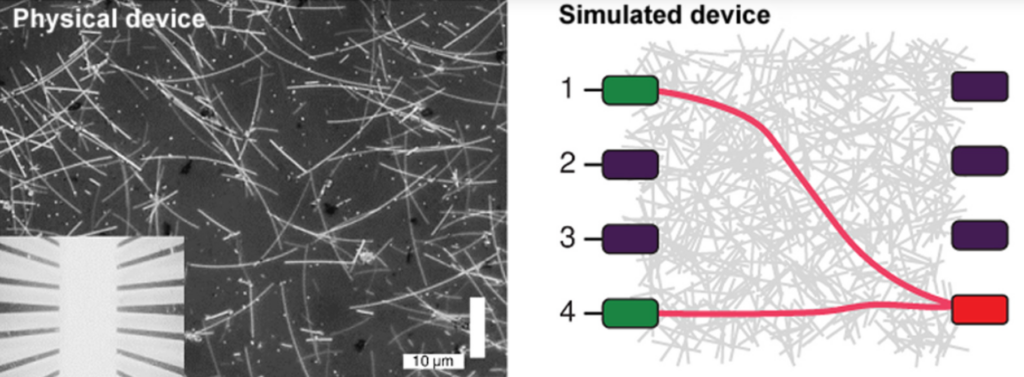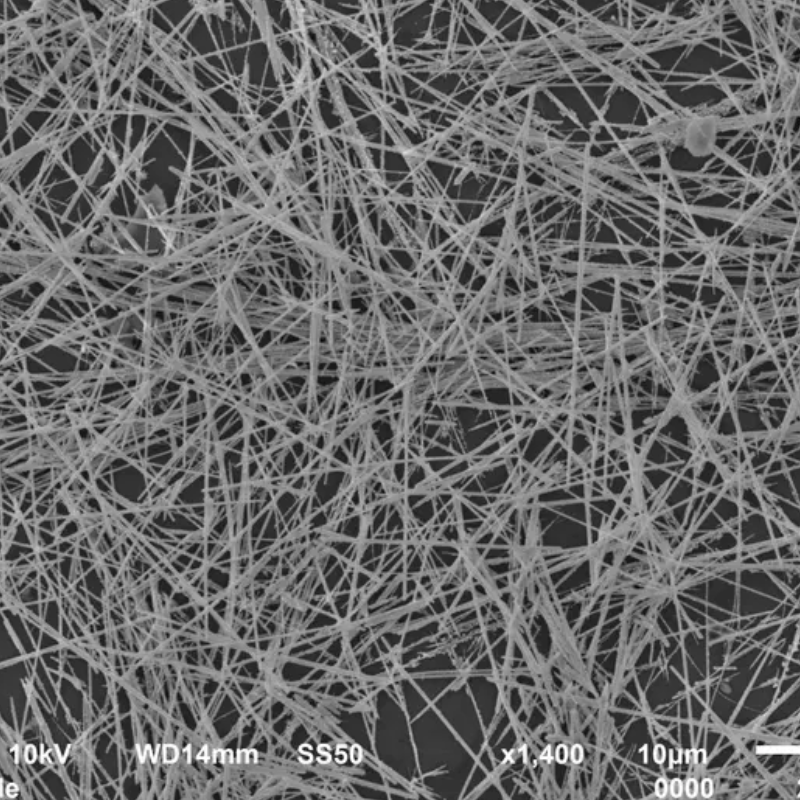Nanowire networks learn and remember like a human brain
Apr. 23, 2023.
3 mins. read.
16 Interactions
A brain-inspired electrical device with neural network-like circuitry and synapse-like signaling suggests intelligence could be physical
Neural network-like circuitry and synapse-like signaling suggest intelligence could be physical
An international team led by scientists at the University of Sydney has demonstrated nanowire networks that can exhibit both short- and long-term memory like the human brain.
“In this research we found higher-order cognitive function, which we normally associated with the human brain, can be emulated in non-biological hardware,” said physicist Dr. Alon Loeffler. “This work builds on our previous research, in which we showed how nanotechnology could be used to build a brain-inspired electrical device with neural network-like circuitry and synapse-like signaling.
“Our current work paves the way towards replicating brain-like learning and memory in non-biological hardware systems and suggests that the underlying nature of brain-like intelligence may be physical.”
Nanowire networks

Nanowire networks are a type of nanotechnology typically made from tiny, highly conductive silver wires that are invisible to the naked eye, covered in a plastic material. The wires are scattered across each other like a mesh and mimic aspects of the networked physical structure of a human brain.
Advances in nanowire networks could herald many real-world applications, such as improving robotics or sensor devices that need to make quick decisions in unpredictable environments.
“This nanowire network is like a synthetic neural network because the nanowires act like neurons, and the places where they connect with each other are analogous to synapses,” said senior author Professor Zdenka Kuncic, from the School of Physics.
Testing nanowire network intelligence
To test the capabilities of the nanowire network, the researchers gave it a test similar to a common memory task used in human psychology experiments: the N-Back task.
For a person, the N-Back task might involve remembering a specific picture of a cat from a series of feline images presented in a sequence. An N-Back score of 7, the average for people, indicates the person can recognize the same image that appeared seven steps back. When applied to the nanowire network, the researchers found it could “remember” a desired endpoint in an electric circuit seven steps back, meaning a score of 7 in an N-Back test.
“What we did here is manipulate the voltages of the end electrodes to force the pathways to change, rather than letting the network just do its own thing. We forced the pathways to go where we wanted them to go,” Loeffler said.
“When we implement that, its memory had much higher accuracy and didn’t really decrease over time, suggesting that we’ve found a way to strengthen the pathways to push them towards where we want them, and then the network remembers it. Neuroscientists think this is how the brain works: certain synaptic connections strengthen while others weaken, and that’s thought to be how we preferentially remember some things, how we learn and so on.”
The researchers said that when the nanowire network is constantly reinforced, it reaches a point where that reinforcement is no longer needed because the information is consolidated into memory.
“It’s kind of like the difference between long-term memory and short-term memory in our brains,” Kuncic said. “If we want to remember something for a long period of time, we really need to keep training our brains to consolidate that; otherwise it just kind of fades away over time.
Citation: Loeffler, A., Diaz-Alvarez, A., Zhu, R., Ganesh, N., Shine, J. M., Nakayama, T., & Kuncic, Z. (2023). Neuromorphic learning, working memory, and metaplasticity in nanowire networks. Science Advances. DOI: 10.5281/zenodo.7633957. https://www.science.org/doi/10.1126/sciadv.adg3289 (open-access)
Let us know your thoughts! Sign up for a Mindplex account now, join our Telegram, or follow us on Twitter.


.png)

.png)


.png)








2 Comments
2 thoughts on “Nanowire networks learn and remember like a human brain”
Fascinating development! Seeing brain-like memory and learning in non-biological hardware could open incredible doors for AI.
🟨 😴 😡 ❌ 🤮 💩
🟨 😴 😡 ❌ 🤮 💩